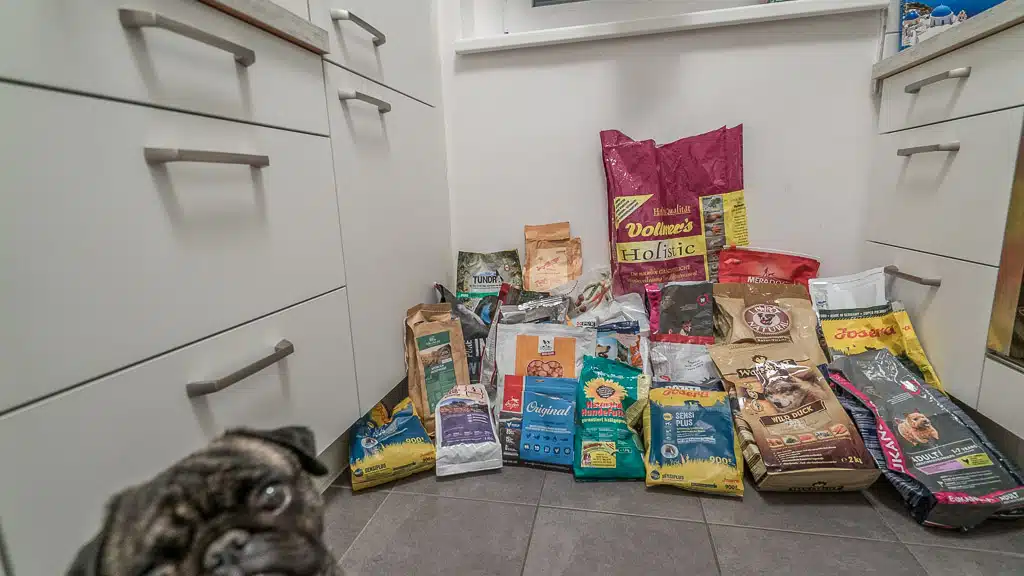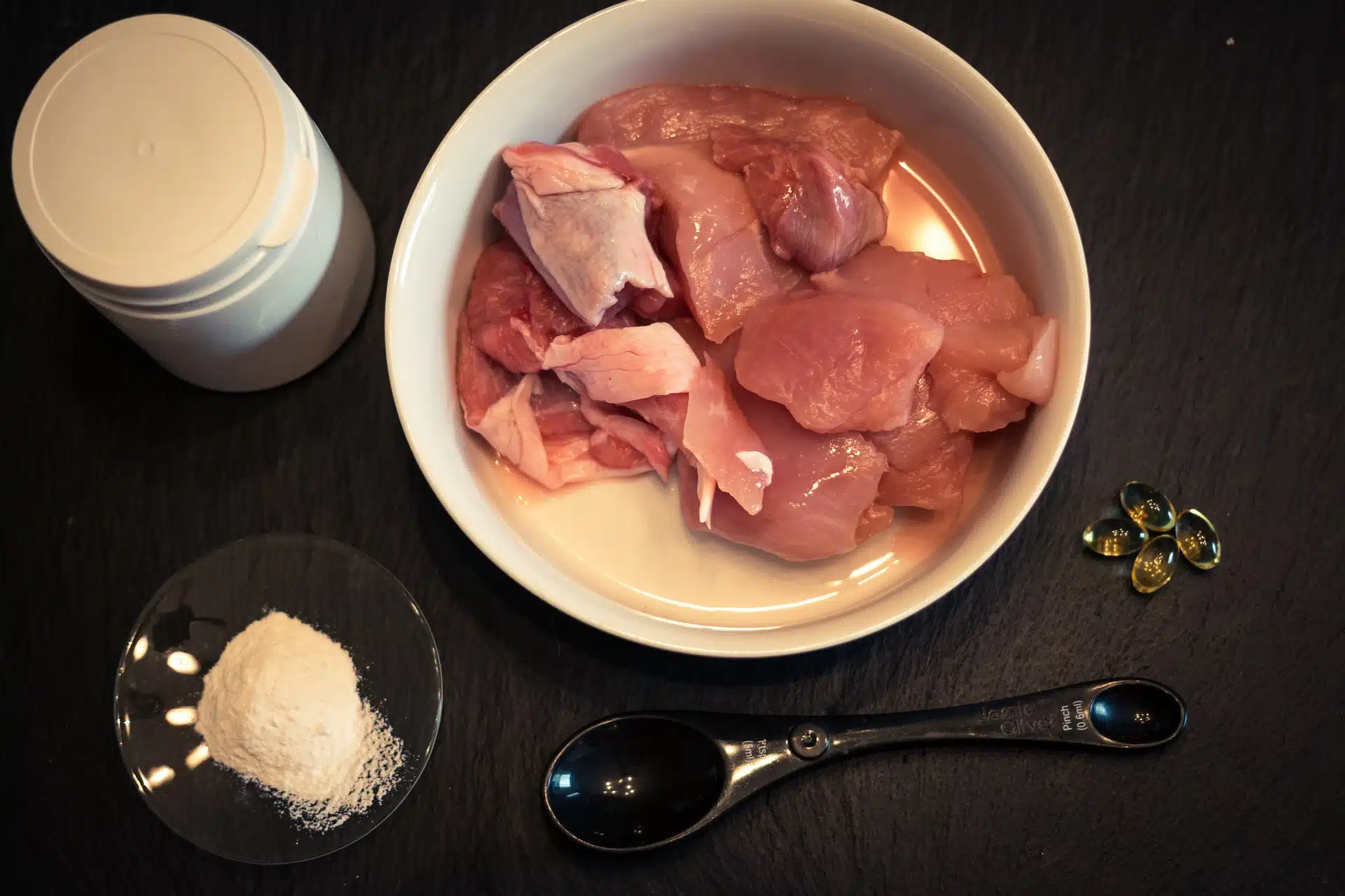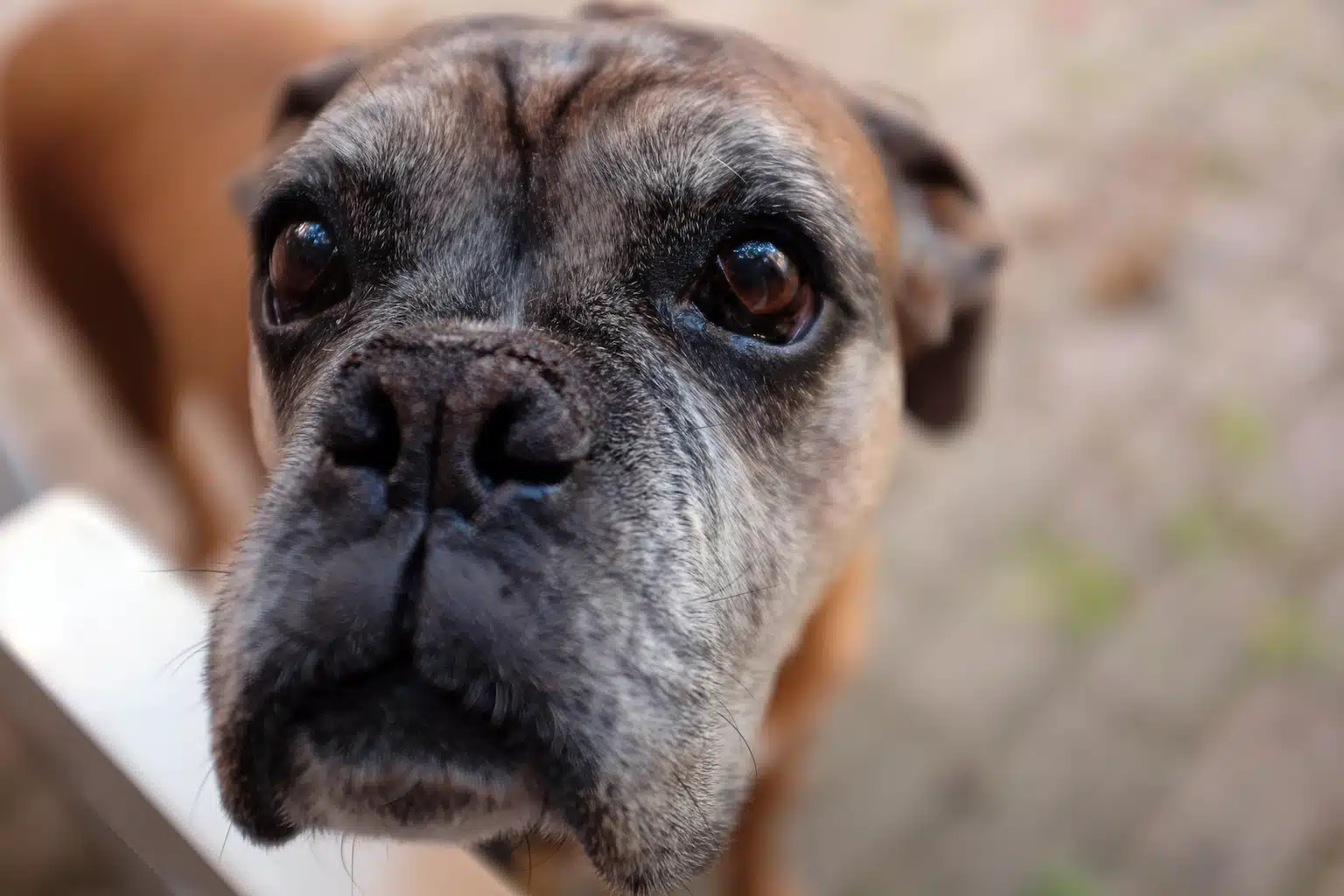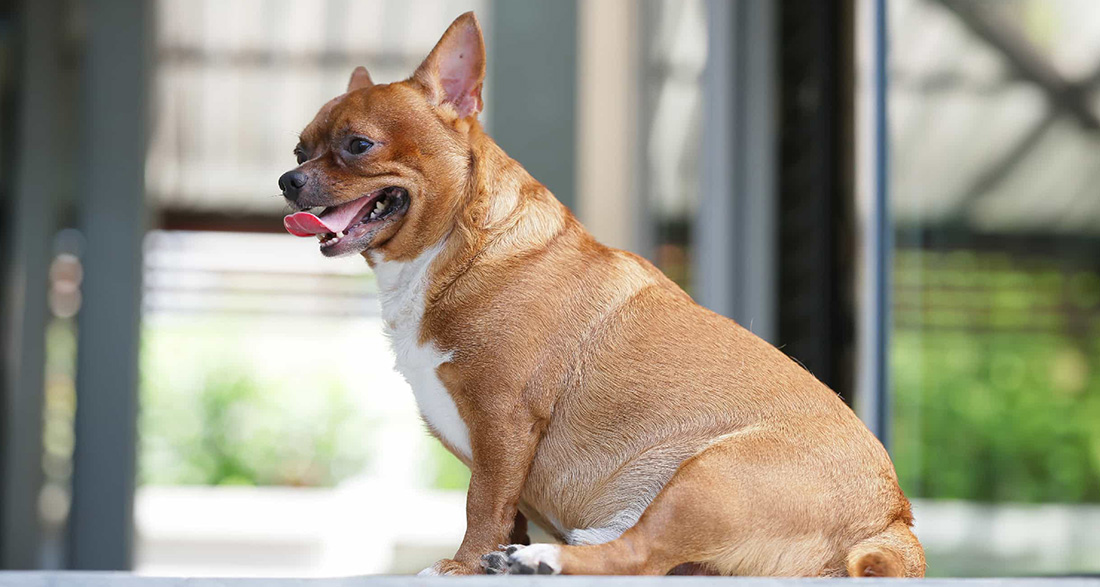Do you want to know if and which diet food is really good for your dog? We’ve looked at various brands, found 4 recommendations for you, and provide you with a guide that truly helps.
Our Top Picks
[table id=15 cache_table_output=false /]
What we look for 🐶
In our food research, we first looked at the calorie content. For diet food, the calorie content should range between 15% and 25%. This content is based on an adult dog and does not apply to puppies.
Next, we took a close look at the feeding amount. There should be a clear feeding amount on every package. Ideally, in table form with the dog’s weight and the recommended daily ration.
Essential fatty acids should also be included in good diet food, as omega-3 fatty acids stabilize the dog’s blood sugar level.
Natural fibers are a must for adequate fiber intake. They ensure that the dog’s stomach is sufficiently filled while maintaining intestinal health. They also help maintain muscle mass.
Who is this test for?
Our article is written for all dog owners who have an overweight dog at home and want to make a change today.
We’ve tested dozens of dog foods and analyzed additional brands for this article so we can help you with confidence.
Which food is suitable for weight loss?

In many scientific studies, food brands have been identified that are suitable for a reduction diet. With them, the best results can be achieved in terms of the dog’s weight loss.
It is important that the dog loses weight in a healthy and sustainable way and is not affected by the yo-yo effect. In addition, muscle mass should not be affected by the weight loss. Special diet food is suitable for this purpose.
Diet Food vs. Light Food

Today, there are numerous food brands that are labeled either as diet food or as light food. Manufacturers advertise both as excellent diet food, but what are the differences between these two types?
Light Food:
Manufacturers may independently label their products as “light.” It is a marketing term. Typically, manufacturers label a dog food as “light” if it is the lowest calorie food in their production series.
So, it may happen that the light food of one manufacturer has the same calorie content as the regular dog food of a completely different manufacturer.
Diet Food:
It is different with the designation “diet food.” The name “diet food” is legally protected and cannot be assigned by the manufacturer. According to feed law, the food must meet special nutritional purposes.
In addition, strict EU or U.S. quality guidelines are followed. All information must be recorded on the packaging so that every dog owner can check if it is diet food.
What should I look for in good diet food?

Good diet food must have a low calorie content. The guideline for this is always regular dog food. Typically, the calorie content for good diet food ranges from 15% to 25% of regular dog food, depending on the manufacturer. This calorie content is intended for an adult dog.
Additionally, good diet food should definitely contain less energy but more vitamins, trace elements, and minerals. Especially during weight loss, your dog needs vitamins and minerals to prevent deficiencies.
Even though good diet food should have a low fat content, it must still contain fatty acids. Fatty acids are essential for life and provide your dog with important nutrients. Omega-3 and 6 fatty acids, in particular, are important. They are anti-inflammatory and responsible for stabilizing blood sugar levels.
These days, good diet food should also have a high protein content. This makes the diet food tasty and provides enough amino acids, which are good for targeted fat loss. Additionally, it ensures the maintenance of muscles even when weight is reduced.
Dietary fibers are a must. They can be soluble or insoluble and are considered as fiber, ensuring that your dog’s stomach feels full. They can also regulate intestinal health and digestion when included in the right amount.
Of course, the food should be easy to weigh.
Why not just “Eat less”?
Many are familiar with the term “Eat less” and wonder why it is not sufficient for a dog to simply “Eat half.” At first thought, “Eat less” might seem like a good idea, and it’s also cost-effective.
However, upon further consideration, it becomes clear that the dog cannot simply receive less food. The reasons for this are explained here:
- Deficiency Symptoms: If you rely on “Eat less,” your dog will not only receive half the amount of food but also half the vitamins, minerals, and all essential building blocks. This can quickly lead to deficiency symptoms, which can result in serious illnesses.
- Loss of Muscle Mass: Some studies have shown that with “Eat less,” the dog loses a lot of muscle mass. But that is precisely wrong during a diet. Muscle mass must be largely preserved. Fat must disappear.
- Risk of Yo-Yo Effect: Once too much muscle mass is lost, the yo-yo effect can set in. The reason is quite simple: Muscles consume energy. When there are fewer muscles, there is an excess of energy, and as a result, the dog forms new fat deposits.
- Begging and Frustation: A dog quickly realizes that the bowl is only half full and the stomach is growling. The consequence is begging behavior. Especially with extreme begging behavior, the dog owner quickly gives in.
But the dog can also build up frustration. It not only starts stealing and eating human food but also expresses its frustration by damaging furniture or other things.
How sensible is it to prepare diet food yourself?

Diet food can certainly be cooked at home. However, countless experiences have shown that success is often lacking. The reasons usually lie in the fact that the ingredients are not precisely measured.
Furthermore, it is quite difficult to find the exact composition for the dog food. While there are some good-sounding recipes on the internet, these are often made by other dog owners.
Above all, dog owners always pay attention to their dog’s taste preferences, and so it quickly happens that the actual diet food becomes more like a gourmet menu, thereby burdening the scale rather than alleviating it.
Additionally, cooking diet food can become very expensive over time. The high-quality and fresh ingredients are costly. Moreover, the time commitment is truly immense.
However, if you are interested in the topic of cooking yourself, we recommend our guide to barfing for beginners.
When is a dog considered overweight?
Every veterinarian and also the internet provide weight tables for individual breeds. Here, you can find the average normal weight of dogs. You can use these as a rough guideline.
However, you must always consider that each dog – even if it is of the same breed – has different behaviors. The differences lie in the daily routine, eating habits, and activity level.
Additionally, age and gender also play an important role. In general, you can quickly determine if your dog is overweight by following a few tips:
- The waist is filled out
- The ribs are not easily palpable
- The ribs cannot be counted
- Fat deposits on the back and base of the tail
- Decreased enthusiasm for physical activity
What exactly is overweight?

Overweight is also known as obesity in medicine. This refers to an accumulation of fatty tissue. Anything that is at least 10% above the normal weight is considered overweight.
Obesity (obesity) occurs at more than 20% above the normal weight.
Causes of Obesity
The development of overweight (obesity) begins with an imbalance. The dog consumes a lot of energy but does not expend enough. Basically, the amount of food should be calculated based on activity, because a dog that lies around all day or is ill should not receive the same amount of food as a dog that is active all day.
Consuming too much dog food can also quickly lead to overweight. Another reason is neutering.
Before neutering, the dog expends a lot of energy, which is consumed through food. After neutering, energy expenditure decreases, so the amount of food should be adjusted accordingly. Otherwise, overweight is the result.
There are also some dog breeds that are naturally prone to overweight. Special caution is required here. These breeds include Beagles, Labradors, Retrievers, and Bassets.
Another reason is simply too much food.
Your dog not only receives the daily food ration but also many treats and even leftovers from the table. As a result, the dog receives too much energy that it cannot burn off.
Why is obesity so dangerous for dogs?
Obesity is very dangerous for dogs. Not only does it immensely affect their quality of life, but it also makes them lethargic. The physical strain during movement is too much for the dog.
They tire very quickly and become out of breath. High temperatures also greatly affect the dog.
Moreover, obesity is not good for health. An overweight dog quickly develops problems with bones and joints because the dog’s frame is burdened with too much weight. Additionally, cardiovascular problems or diabetes can be the result.
It has been proven that the risk of developing a tumor is greater in an overweight dog than in a dog with normal weight.
What helps against obesity?
In essence, there are several ways to combat obesity:
- Reduce energy intake by 20 to 25%
- Additional exercise in water
- Provide low-energy, high-roughage diet food
- No more snacks or leftovers from the table


